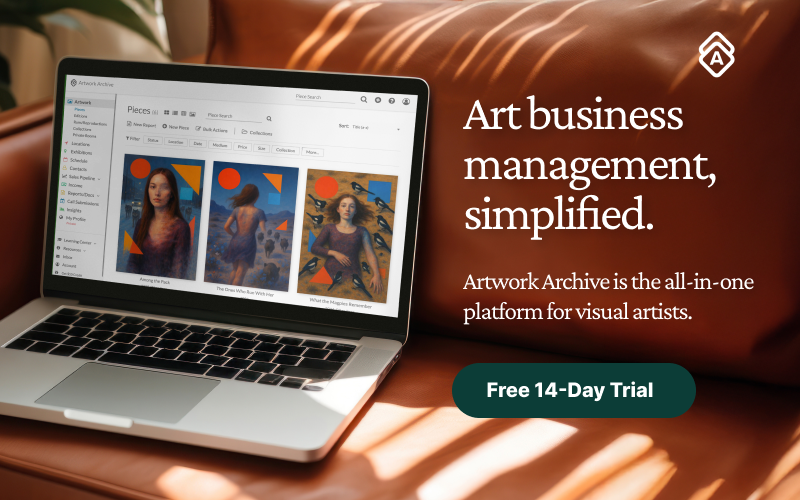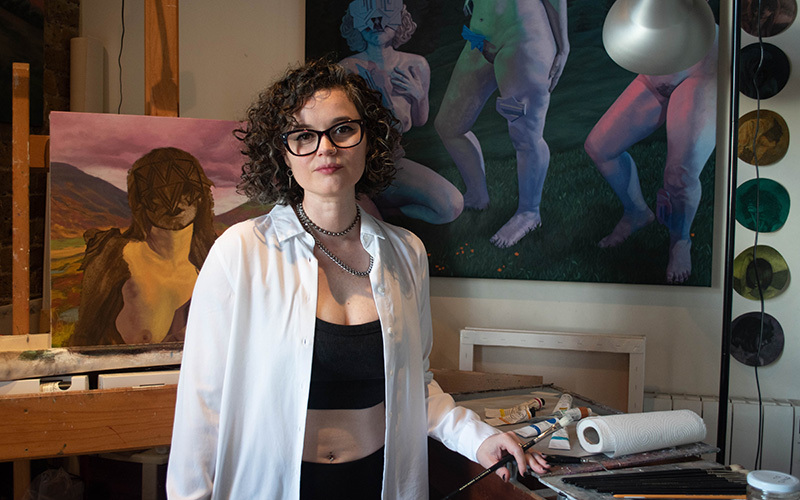 Featured Artist Shaina Craft paints women as she knows them to be: full of agency, movement, and life.
Featured Artist Shaina Craft paints women as she knows them to be: full of agency, movement, and life.
"If I aim to empower, then my models should embody that."
Artwork Archive’s Featured Artist Shaina Craft couldn’t shake the feeling that so many of the paintings she loved depicted women as passive and almost half alive.
It all made her wonder, why did so many women in paintings from the past look like they were “practically part of the furniture”?
That subversive insight formed the seed for her own masterful paintings, where women take center stage in full charge of their own destinies.
Influenced by the highly detailed and dramatic work of the Italian Baroque painters, Shaina’s canvases show women in active poses that make no attempt to hide their natural creases, bumps, or scars.
“It’s important for women and girls to see artwork that represents them,” the London-based American asserted in her conversation with Artwork Archive, “that they can look at and say, ‘I know what that feels like.’”
She's stayed true to this vision even as trends come and go—she’s confident that it’s better to make the work you really want to see in the world, “so that even during the lean times you have the motivation of creating things that matter to you.”
Empowerment is woven into everything Shaina does, from the way she paints to the way she runs her studio. Read on to learn how she came to her signature painting style, the influences that shape her work, and the tools she uses to run her art career with a sense of purpose.
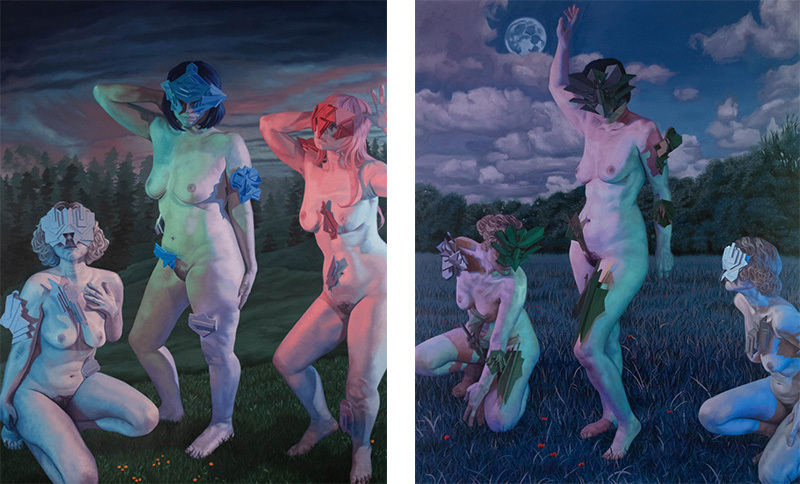 Shaina Craft, Little Mysteries, Oil on linen, 60 x 48 x 1.5 in, and Victory, Oil On Canvas, 60 x 48 in.
Shaina Craft, Little Mysteries, Oil on linen, 60 x 48 x 1.5 in, and Victory, Oil On Canvas, 60 x 48 in.
Building a Painting, Layer by Layer
Shaina’s painting process starts long before she picks up her brushes. Since she invests so much importance in how the women in her paintings are portrayed, she builds her images from the ground up.
As she tells Artwork Archive, she creates meticulous photo references for every painting. “I shoot every element separately, each model and environment,” she reveals. “Then I put it all together digitally, usually creating twenty or thirty compiled references to work from.”
Not every one of those references becomes a painting, she says—but having a fully fleshed out library of gesture, posture, and form helps when it comes to actually putting paint on her canvas.
“I start each oil painting with a traditional wipe-out underpainting,” she shares. “This is my favorite part of the painting process because it’s more loose and free and also has to be done within time constraints: I only have an hour or two before the solvent starts to dry and becomes unworkable.”
After that underpainting dries, Shaina moves on to the patient and exacting work of creating layers of direct painting. Only at the very end does she finish the entire work with some scumbling and glazing. A small work might take two weeks; a large one, several months.
Every choice that she makes in her painting process reflects a kind of discipline that feels rare in an age of shortcuts. But as she explains next, her process is intended to both honor the old masters, at the same time that her subject matter subverts them.
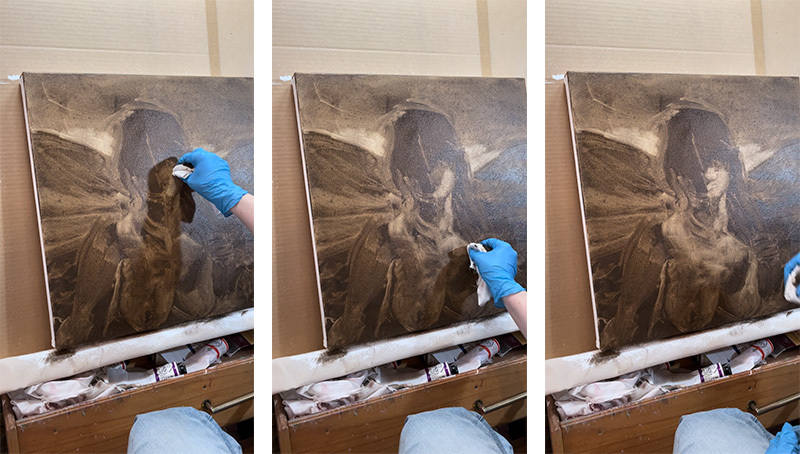 Shaina's multi-step process of underpainting yields a rich, layered final canvas.
Shaina's multi-step process of underpainting yields a rich, layered final canvas.
Painting Women Who Are in Charge of Their Own Bodies
One of the most striking things about Shaina’s paintings is how alive her subjects seem.
“I only paint women in active poses,” she asserts.
Her women move. They act. They’re a far cry from the reclining female nude that so many generations of male painters resorted to.
“The vast majority of paintings of women, especially nudes, depict them prone, lying on a bed or sofa looking half alive,” she recalls. Hers, on the other hand? “They are participating in their lives and the masters of their own destinies.”
Equally important are the physical details that she chooses to leave in from her model’s bodies: the skin folds, the scars, the textures of real bodies. “Including all of those details,” she realized, “makes it easier to express thoughts and emotions through my figures.”
Her paintings ask the viewer to see what’s been edited out of the historical record: the agency, strength, and humanity of women who refuse to disappear into the background.
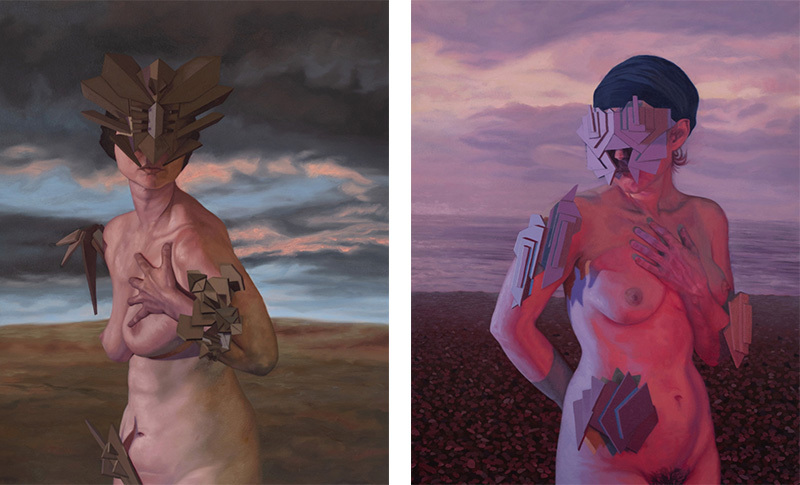 Shaina Craft, What Dream Was Here, Oil On Canvas, 30 x 24 in, and Less Without and More Within, Oil On Canvas, 30 x 24 in.
Shaina Craft, What Dream Was Here, Oil On Canvas, 30 x 24 in, and Less Without and More Within, Oil On Canvas, 30 x 24 in.
The Baroque, Reimagined
The expertly modeled forms in her paintings, combined with the careful attention to light and shadow, reveal her deep fascination with Baroque painting.
Drawing inspiration from painters like Caravaggio, Shaina relates how she uses dramatic contrast in light and color to heighten the emotional presence of her paintings.
But she also positions her work in a more specific context: “I consider myself part of a long line of female painters who have focused on depicting the female form,” the artist reflects. “Most of them have been overshadowed by their male counterparts, but they are there if you know where to look.”
Two female painters from the Baroque period with whom she feels a particular affinity are Artemisia Gentileschi and Elisabetta Sirani. "I can only hope to be worthy of their legacy,” she humbly offers, “and keep trying to bring real depictions of the female nude to the forefront of figurative painting today.”
Her paintings continue that lineage but turn its logic inside out. Where the Baroque painters made women luminous through divine light, she illuminates them through their own vitality.
 Shaina Craft, I Do Wander Everywhere, oil on wood, 11.8 x 11.8 in, and One Face, One voice, oil on wood, 15.7 x 15.7 in.
Shaina Craft, I Do Wander Everywhere, oil on wood, 11.8 x 11.8 in, and One Face, One voice, oil on wood, 15.7 x 15.7 in.
Think Like an Artist—and a Professional
When asked what mindset shift most changed her career, Shaina doesn’t hesitate: “Thinking of your art practice as a business,” she says. “No one will take you seriously if you don’t.”
She learned these skills the hard way. At the beginning of her career, she tried to track everything herself using scattered notes and memory. “I had lots of bad habits I had to break,” she admits with regret, “like not keeping names and contact info organized for each of my collectors, not remembering the dates of when work was being shipped back from institutions, or missing deadlines for competitions.”
She had to rethink how she managed her studio. The turning point came during a period of rapid sales.
“Several years ago I was making a lot of miniatures and they were selling out as fast as I could make them,” she recalls.
That’s a good problem for any artist to have, but the problem was that her systems were nowhere near up to the task. She was making lists in a word processor, constantly struggling to find out which pieces were available and which were already sold. She was afraid she would sell a piece to a collector, only to find out that she had already sold it to another one.
“It took hours of my time and I struggled with trying to find the images and dates of each one,” she remembers. “Eventually I realized I needed a better system.”
Shaina realized that to take her art business seriously, she needed a platform that could take some of the heavy lifting out of her admin tasks.
She was desperate for a solution that could allow her career to keep growing: “I looked at a couple of different inventory software programs, but none of them seemed as comprehensive or easy to use as Artwork Archive.”
 Shaina Craft, Tondo Drawing 3, Charcoal and watercolor on paper, 6 x 6 in, and Tondo Drawing 2, Charcoal and watercolor on paper, 6 x 6 in.
Shaina Craft, Tondo Drawing 3, Charcoal and watercolor on paper, 6 x 6 in, and Tondo Drawing 2, Charcoal and watercolor on paper, 6 x 6 in.
Finding the Right Tools to Organize Your Art Practice
Since Shaina made the switch to organizing her work with Artwork Archive, she’s been able to streamline her admin tasks and win back time for her painting.
Now, she manages her entire catalog digitally in Artwork Archive, from custom Tear Sheets for collectors to more in-depth exhibition planning.
“My favorite feature is definitely the ability to create Reports,” she tells Artwork Archive. “It’s so easy to pull a group of work together to send off and there are so many options for formatting.”
She recently used that feature to send a proposal to House of Bandits, the retail shop of the Sarabande Foundation in London, which was doing a pop-up at Selfridges. For easy and quick proposals like this, “I usually create Catalog pages, because it gives me big beautiful full page images with all the information I need at the bottom.”
Create a Picture Perfect Catalog Page in Seconds:
When that next exhibition opportunity or fair invitation comes your way, be ready with Artwork Archive's Catalog Pages. In a few clicks, you can have a beautiful PDF ready to send to collectors, curators, or fellow artists.
Art Lessons For the Long Game
Even though Shaina learned early that she had to treat her art career like a business, she also makes sure that she’s always following her inner North Star rather than chasing trends.
“It’s important to separate that business from the actual making of your art,” she explains. “Don’t let the market determine what kind of work you make.”
When you’re just starting out as an artist, she advises that you take every opportunity: do all the group shows, fairs, and markets that you’re able to. But after that, "when you’re starting to understand your own work a little better, you can start to be more picky.”
Tailoring your art to whatever’s popular at the moment will leave you empty—and your work will seem soulless, too.
“Eventually the winds will shift anyway and you’ll be stuck chasing the next big thing each time,” she urges. You’ll avoid a lot of frustration and burnout if you just stay true to what inspires you, and your work will be all the richer for it.
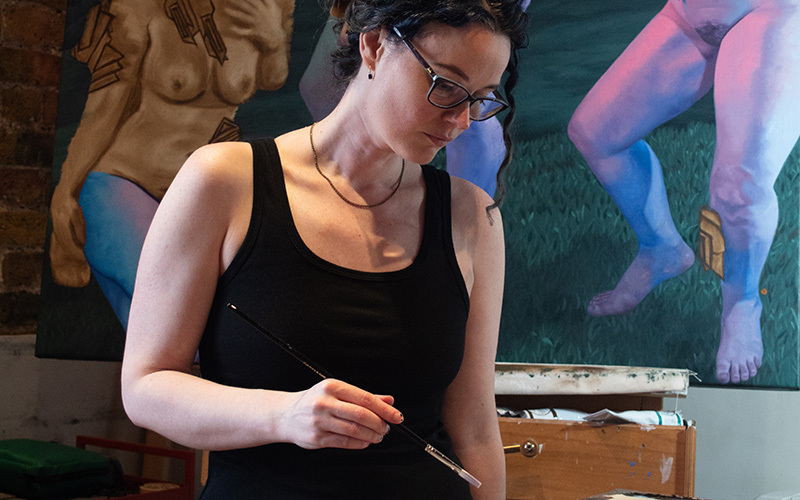 Shaina knows that staying true to your inner vision will always beat the latest fad or trend.
Shaina knows that staying true to your inner vision will always beat the latest fad or trend.
Art Advice to Live By
Shaina Craft’s final piece of advice? “Document everything.”
That might sound like basic, practical advice, but for her, it’s also philosophical.
Documentation is memory, it’s how an artist tracks growth, understands their trajectory, and claims authorship over their story.
For a painter who’s spent her career giving women back their agency, that’s a fitting goal.
No matter where you are in your art journey, getting your business side in order doesn’t have to feel overwhelming. A bit of structure now can mean more time and headspace for the work you actually want to be doing.
Artwork Archive helps artists build an online portfolio, stay on top of their inventory, and create things like tear sheets and invoices in just a few clicks. Start a free trial and see how it fits into your own process.

